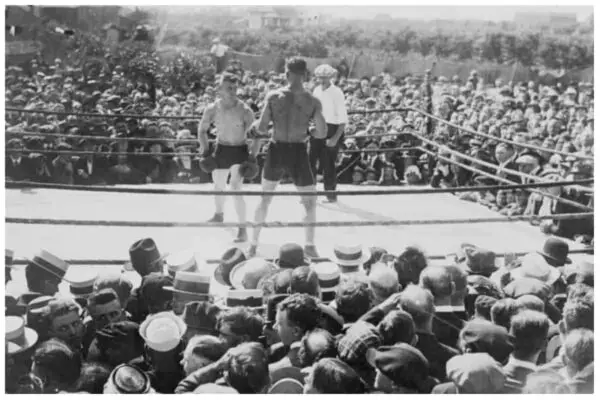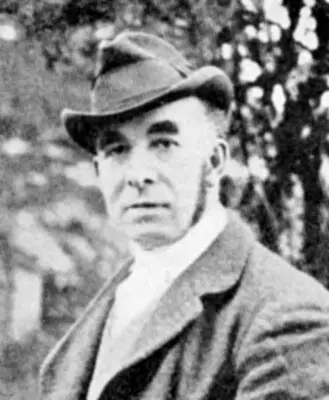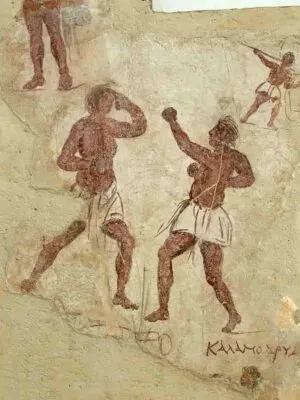
You often hear boxing analysts mentioning Queensberry rules or by boxers on TV, sometimes to differentiate between boxing and other combat sports, such as kickboxing, Muay Thai, and Mixed Martial arts. But what exactly are these Queensberry rules you often hear about from boxing commentators?
The Queensberry Rules refer to the rules published in 1867 by John Graham Chambers, a journalist, which provided clear guidelines for all fighters involved in a boxing match. These rules were necessary to attract a better class of patrons to boxing, which alienated many due to the sheer violence.
And you may wonder why were the rules named “Queensberry,” and how did they come about? You are about to become an expert at knowing the most important things about Queensberry rules in the next 10 minutes, so let’s dig in.
The Origin of Queensberry Rules
The Marquess of Queensberry Rules, also known as the Queensberry Rules, is a set of twelve rules to regulate the conduct of boxing matches. The Queensberry Rules were first published in 1867 by John Graham Chambers, who was a journalist to provide clear guidelines for all fighters involved in a boxing match.
Before the Queenberry rules, there were London Prize Ring rules, which set guidelines for boxing matches at the time. However, despite the London rules, boxing was still seen as synonymous with old-time pugilism. This alienated many of England’s elite, and further revisions were necessary to attract a better class of patron.
The new twelve rules were implemented after an inaugural world title fight between American John Heenan and English Tom Sayers. Boxing was illegal at the time, and as a consequence, this brutal fight was broken up by policemen in its final round.
The crowd dispersed, but amongst the attendees were several influential figures of the time – Charles Dickens, the Prince of Wales, and prime minister Lord Palmerston, who faced some stiff questions in parliament the following day. The damage done to both fighters and this high-status crowd meant that a change of ruleset was required to make boxing more socially accepted.
The Queensberry rules outline what constitutes fair competition. On September 7, 1892, when James J. Corbett defeated John L. Sullivan, it was the first heavyweight championship fight under Queensberry rules.
The rules specified how to conduct a boxing match, which included the following:
- 1. To be a fair boxing match in a 24-foot ring (7.3152 meters), or as near that size as practicable.
- 2. No wrestling moves or hugging (clinching) are allowed.
- 3. Every round is 3 minutes long with a 1-minute rest in between.
- 4. If either boxer goes down, he must get up without assistance before the referee counts to ten, and the other boxer meanwhile returns to their corner and stands there. When the fallen man is on his legs, the round is to be resumed and continued until the three minutes have expired. If one man fails to come to the scratch in the 10 counts allowed, it shall be in the power of the referee to give his award in favor of the other man.
- 5. A boxer hanging on to the ropes because they can’t stand up by themselves, with his toes off the ground, shall be considered down.
- 6. Only the boxers and referee are allowed in the ring during the rounds.
- 7. If a fight has to be stopped due to any unavoidable interference, the referee to name the time and place to finish the match unless both boxers agree to call the fight a draw.
- 8. The gloves to be fair-sized boxing gloves of the best quality and new.
- 9. If a glove burst or comes off, it must be replaced to the referee’s satisfaction.
- 10. A man on one knee is considered down unless it is not caused by a punch.
- 11. No shoes or boots with springs allowed.
- 12. The contest in all other respects to be governed by revised London Prize Ring Rules.
RECOMMENDED READING: What Is Shadowboxing? Everything a Beginner Needs to Know
Why is it called the Queensberry rules?
When John Graham Chambers, a British sportsman and journalist, published new boxing rules in 1867, he named the new rules “The Marquess of Queensberry Rules.” This was done to credit John Sholto Douglas, a British nobleman and the 9th Marquess of Queensberry, for sponsoring the new rules.

Are Queensberry rules still used?
The Marquess of Queensberry Rules is widely regarded as the most important set of rules in boxing because they define a baseline of what is considered acceptable aggression within a boxing match.
For this reason, the Queenberry Rules are still the core of the boxing rules, upon which new rules have been added for both professional and amateur bouts.
How have the boxing rules changed since the Queensberry rules?
Boxing rules have gone through some changes since the Queenberry rules were first established. There have been several revisions over the years with boxing rules, and new ones are constantly added when needed. As a result, the rules in place today are a mix of those that were established more than a century ago and newer ones created in response to changing circumstances.
The most significant difference between the original and modern rules is that modern fights can’t last forever. This is because the original rules didn’t specify any required number of rounds for the fight to end. For this reason, old boxing matches used to have many rounds until one of the boxers couldn’t continue due to exhaustion or got knocked out.
In contrast, modern professional fights have a maximum of 12 rounds. Suppose there isn’t a stoppage due to KO, TKO, or other injuries after 12 rounds. Ringside judges will then determine the winner of the bout based on a 10-point must system designed to score boxers’ performances.
During the bout, three ringside judges score each round independently, taking into account ring generalship, defense, effective aggression, and hard and clean punches. Points are deducted for violations of the rules.
Another important difference is that new rules have been added to disqualify a fighter if caught using banned substances during a boxing match. As a result, the use of various prohibited substances is a new concern in the modern boxing era compared to the 1860s, when the Queensberry rules were introduced. These issues with banned substances were virtually non-existent during that time.
RECOMMENDED READING What is Banned/Illegal in the UFC?
What was boxing like before the Queensberry rules?
Boxing began to become more modernized in England and, to a lesser extent, the United States during the mid-18th century. Before this modernization, boxing was closer to a street fight that was often cruel, similar to how MMA was frowned upon in the early 1990s without being sanctioned. In addition, these early boxing matches were conducted without the use of gloves.
There were much fewer rules to follow, and fights were not divided into rounds. Fighters would take their opponent and slam them on the ground until one of them was knocked out. There were no weight divisions or time limits, so fighters could beat up a man as long as they could last.
Sometimes, a fighter could get lucky and get in a lucky punch that causes his opponent to have an injury that will keep him out of the ring for a while. The only way to end the fight was for one of the fighters to be knocked out or bleed too much. It was also common until the mid-1700s to hit a man when he was down.
From around 1743, rules written by English longshoreman and heavyweight boxing champion, Jack Broughton would be codified and utilized throughout the country. Broughton is widely regarded as “the father of boxing,” who made key changes to boxing rules.
One of the major changes that Broughton’s introduced was not allowing a boxer to grab the opponent below the waist, while wrestling holds were still allowed. Also, a boxer could not hit a downed opponent. And Broughton introduced a “muffler,” which gave rise to modern boxing gloves to protect fighters’ hands and the opponent’s facial area. All in all, Broughton removed various no-holds-barred techniques from boxing and emphasized hand strikes instead.
Broughton’s rules would be displaced in 1838 by the London Prize Ring Rules, which were later revised in 1853. These rules would build on Broughton’s ones and provide a greater establishment for the Queensberry rules.
RECOMMENDED FOR YOU: Top 11 World’s Deadliest Martial Arts Revealed – Ranked
Where did boxing originally come from?
The first time boxing was seen as a formal Olympic event was in 688 BC, at the 23rd Olympiad, but fighting contests pre-date this and despite opinions to the contrary, the sport didn’t originate in Ancient Greece.

Photo by Zde
A relief sculpture from the Egyptian city-state of Thebes (1350 BCE) shows both boxers and a crowd watching them compete. Boxing is also depicted in Sumerian relief carvings dating back to 3000 BC.
RECOMMENDED READING Is Boxing Considered A Martial Art? Yes, Here’s Why
Why are they called “journeymen” in boxing?
A journeyman boxer is a fighter who may have had a solid career but never had the natural talent, or discipline to excel them to champion, or top contender status. The definition has changed over the years and today’s journeyman is regarded as someone who can go the distance of a fight without sustaining excessive punishment, thereby allowing them to get another fight in a relatively short space of time.
It is typically a boxer who still fights as their career but will often become little more than another number in the win column of a fighter in the pursuit of greatness.
As journeymen become less and less concerned about winning, they can be regarded by some boxing critics and fans as “tomato cans” designed solely to give the higher-status boxers padding to their records.
In the 1950s, the name had a different meaning, with boxers such as the Louisianan world-lightweight champion Arthur Persley being given the tag. Even Ezzard “the Gizzard” Charles would be described as a journeyman for the simple reason that his champion status followed that of Joe Louis’s reign.
Nowadays successful journeymen will fight as often as twice a month and tend to operate under three rules “Entertain. Don’t get hurt. Don’t win.”
When did boxing get rid of 15 rounds?
Boxing commissions were compelled to change from 15 to 12 rounds in the aftermath of when Ray Mancini fought Duk Koo Kim for the WBA Lightweight World Championship in 1982, which Mancini won by TKO in the 14th round.
Kim collapsed moments after the fight ended and was quickly rushed to the hospital. He underwent emergency brain surgery to remove a subdural hematoma but died five days later.
Following the incident, boxing commissions changed several rules, notably reducing fights to 12 rounds to protect fighters from absorbing too many repeated blows to the head. However, it was in 1989 that all of the major boxing governing bodies agreed to the change.
At the same time, others think that boxing commissions got rid of 15 rounds of boxing due to TV ratings. People’s attention span has decreased over the years. Fewer fans tune into 15-round fights these days than there used to be. 15-rounds might be too long for most people to watch before getting tired and bored.
The last heavyweight 15-round title bout occurred on October 16, 1987, when Tyrell Biggs faced Mike Tyson. The last World Boxing Board championship bout for a middleweight title was between Eric Holland and Jose Flores, which was fought on June 7, 1997, in Ruidoso, New Mexico. This was the last time a 15-round bout was held for a major championship, and it resulted in a split decision in favor of Jose Flores.
Related Questions
Why is boxing called “sweet science”?
Boxing is called “sweet science” to imply how technical it is, emphasizing the technicality of boxing moves and the importance of a tactical strategy to win the fight. Pierce Egan, a British journalist, first coined the term “sweet science” in 1831 to describe England’s pugilism.
